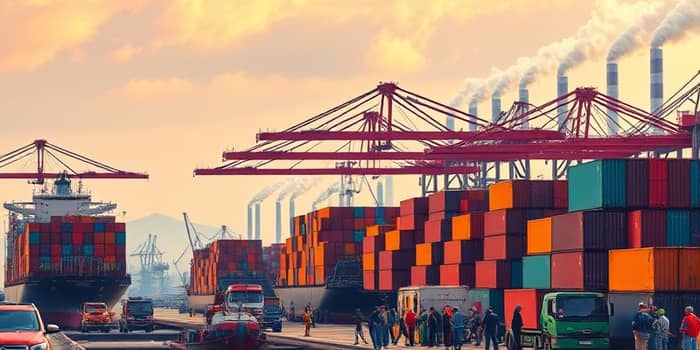
The global manufacturing sector is witnessing a notable rebound as export demand surges across key regions, revitalizing trade flows and economic optimism.
In April 2025, the world saw a marked uptick in manufacturing and trade volume, signaling a departure from the sluggish activity that characterized much of the previous year.
This upswing is evident in major ports, where shipping volumes have climbed and container throughput has returned to levels not seen since early 2024. The recovery is strongest in Asia and Latin America, while Europe continues to lag behind.
Key drivers of this resurgence include:
After months of contraction, Chinese factory activity is showing signs of renewed strength. The official purchasing managers’ index (PMI) rose to 49.7 in June, up from 49.5 in May, though it remains just below the neutral 50 threshold. Importantly, the new orders sub-index climbed to 50.2, indicating that domestic demand has returned to expansion.
Export prospects have also improved, with the new export orders sub-index rising to 47.7. This modest rebound is attributed to an easing of tensions between Beijing and Washington, leading to a better climate for shipments to key markets.
Analysts note that these shifts reflect a broader push by Chinese authorities to stimulate growth through targeted fiscal measures, infrastructure projects, and softer credit conditions for manufacturing firms.
The United States experienced a notable surge in manufacturing activity in late Q1 and early Q2 2025. Firms increased output to front-load inventory ahead of anticipated tariff changes, especially in the auto sector and for pharmaceutical imports. However, by May and June, a pullback emerged as companies adopted a cautious stance amid policy uncertainty.
Mexico has benefited from this dynamic, with nearshoring trends amplifying exports of automotive parts and electronics. Lower transportation costs and proximity to U.S. markets have made Mexican factories increasingly competitive.
The factors influencing U.S. manufacturing in mid-2025 include:
Across Latin America, countries such as Argentina and Chile are posting double-digit export growth rates, driven by strong global demand for commodities and certain manufactured goods. Agricultural exports, minerals, and processed foods have led the charge, supported by favorable currency movements and new trade agreements.
This export boom has generated employment opportunities and increased foreign investment, particularly in mining and agro-industrial sectors. Governments are responding by improving port infrastructure and streamlining customs procedures to sustain momentum.
The following table summarizes key metrics illustrating the current state of global manufacturing and trade in 2025:
Despite the optimistic tone, manufacturers face several headwinds that could temper growth in the latter half of the year. Input costs for raw materials are projected to rise by around 2.7% over the next twelve months, putting pressure on profit margins. Central banks in several economies are considering monetary tightening to rein in inflation, which could increase borrowing costs.
Moreover, policy volatility remains a concern. With elections looming in key markets, the prospect of dramatic shifts in trade policy has led many firms to adopt a conservative inventory stance, risking slower production cycles if demand remains strong.
Geopolitical tensions, labor market fluctuations, and logistic bottlenecks also pose threats. Sluggish port activity in parts of Europe and Asia could undermine export gains, while labor shortages in specialized sectors may constrain capacity expansion.
As the global manufacturing landscape evolves through 2025, companies will need to balance short-term agility with long-term resilience. Continued investment in automation and clean technologies can reduce reliance on manual labor and improve environmental performance. Governments that pursue diversification of global supply chains through trade agreements and infrastructure spending will help their industries thrive.
Ultimately, the recovery of manufacturing activity and export demand reflects both the resolution of past disruptions and the power of innovation. By navigating uncertainties with strategic foresight, businesses can capitalize on emerging opportunities and contribute to a more stable, interconnected global economy.
Whether through nearshoring, sustainable practices, or digital transformation, the manufacturing sector is poised to enter a new era of growth—provided that stakeholders remain vigilant, adaptable, and collaborative.
References













